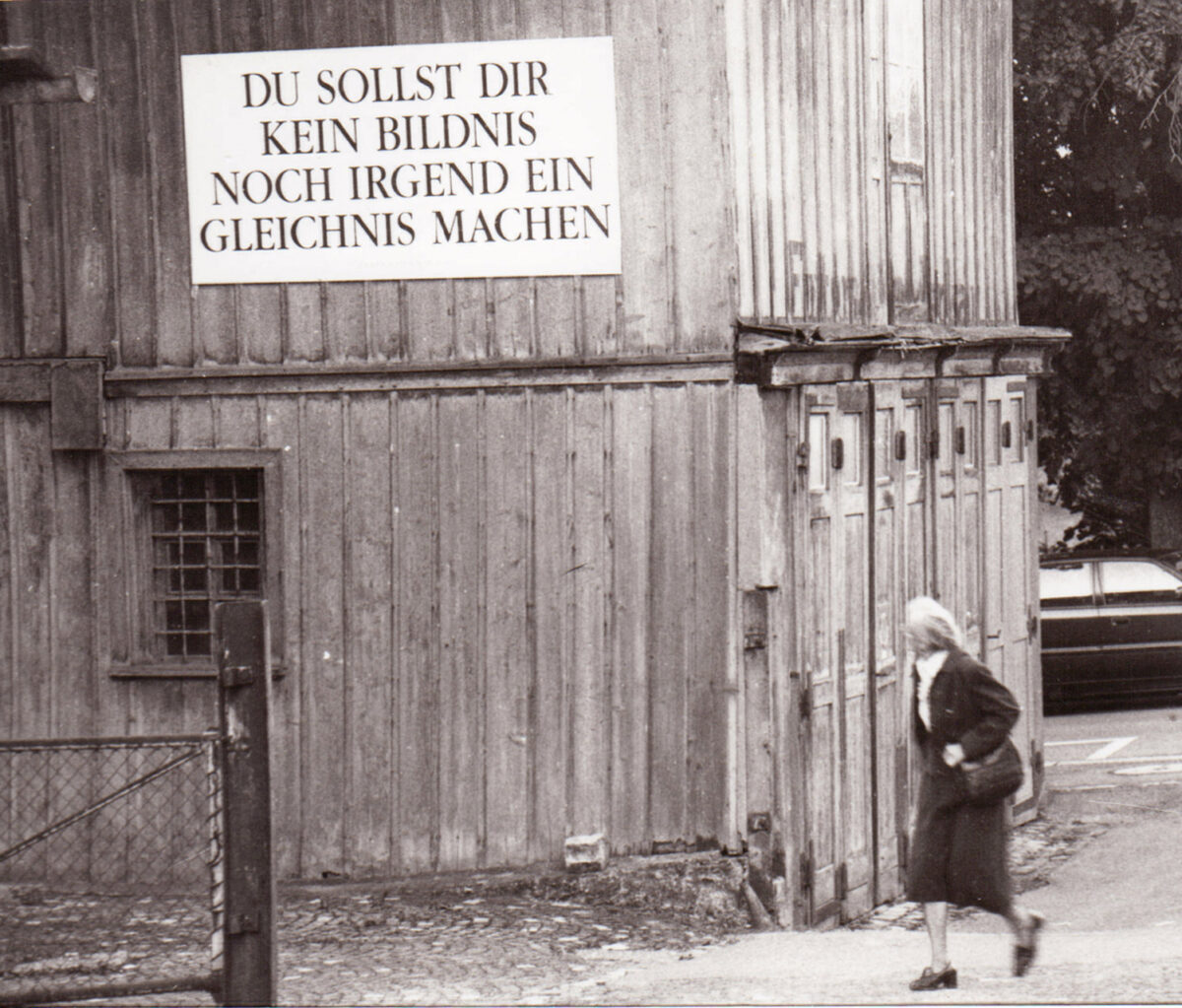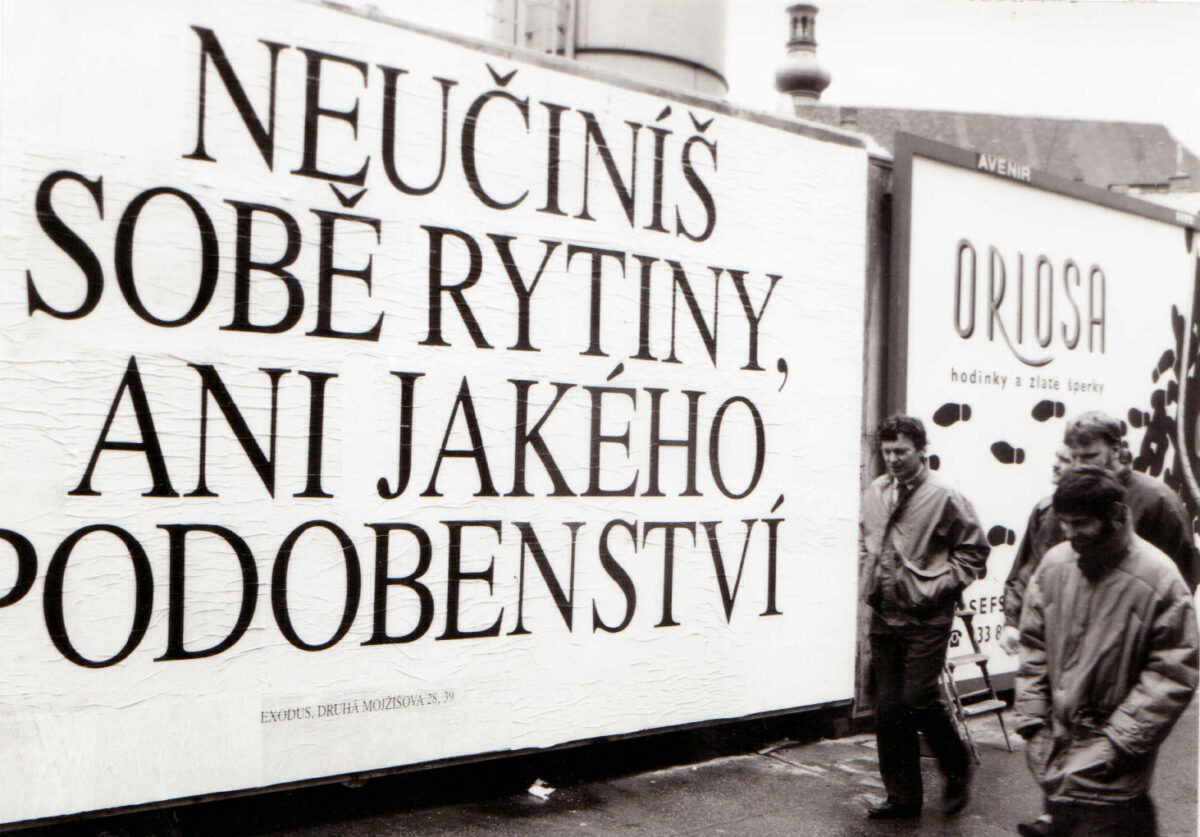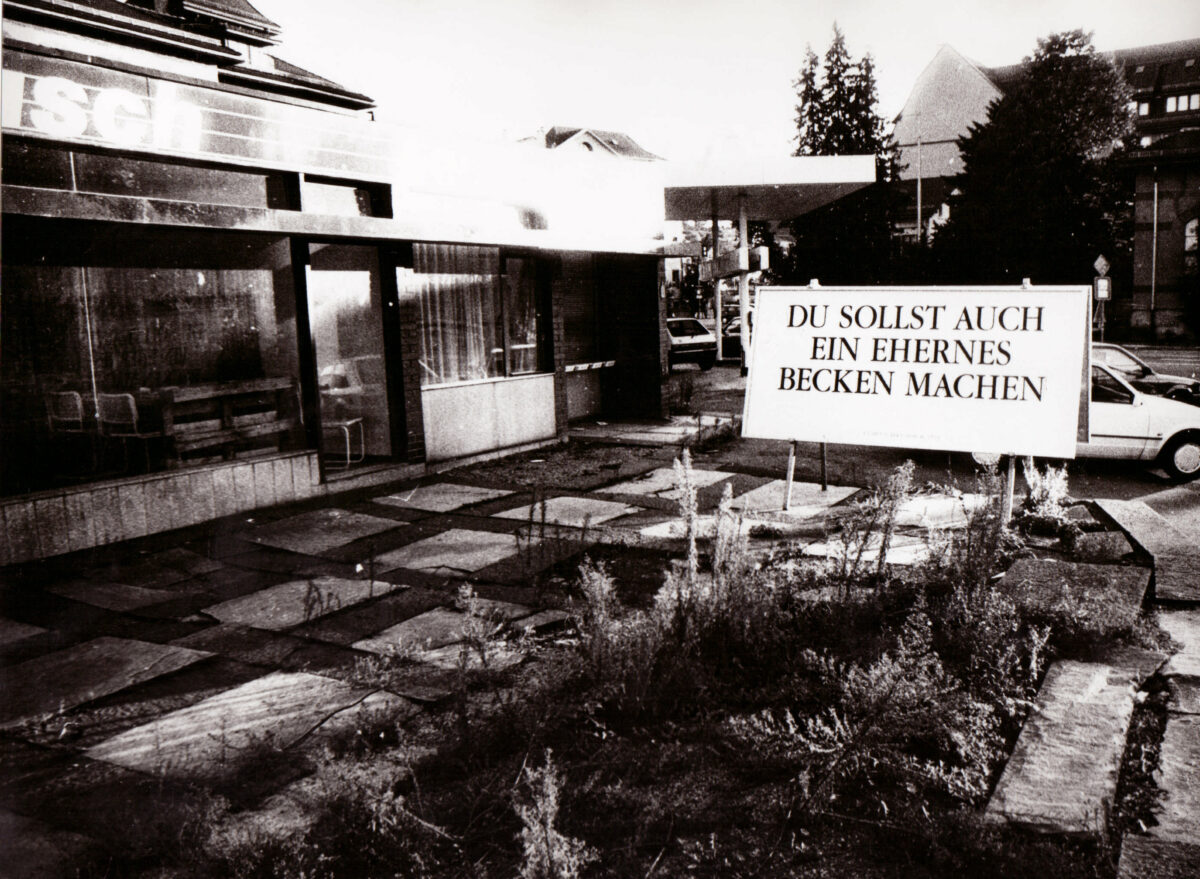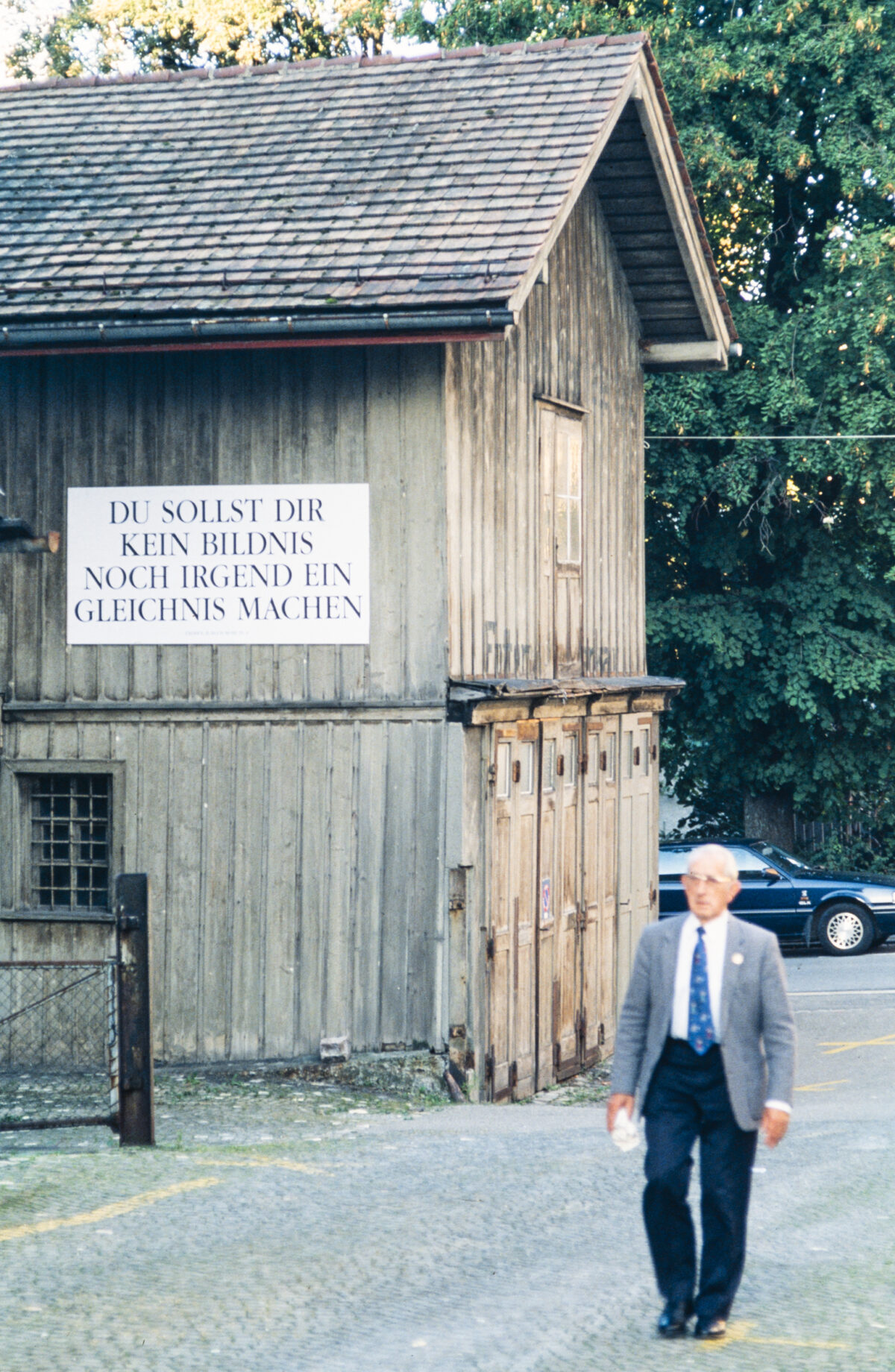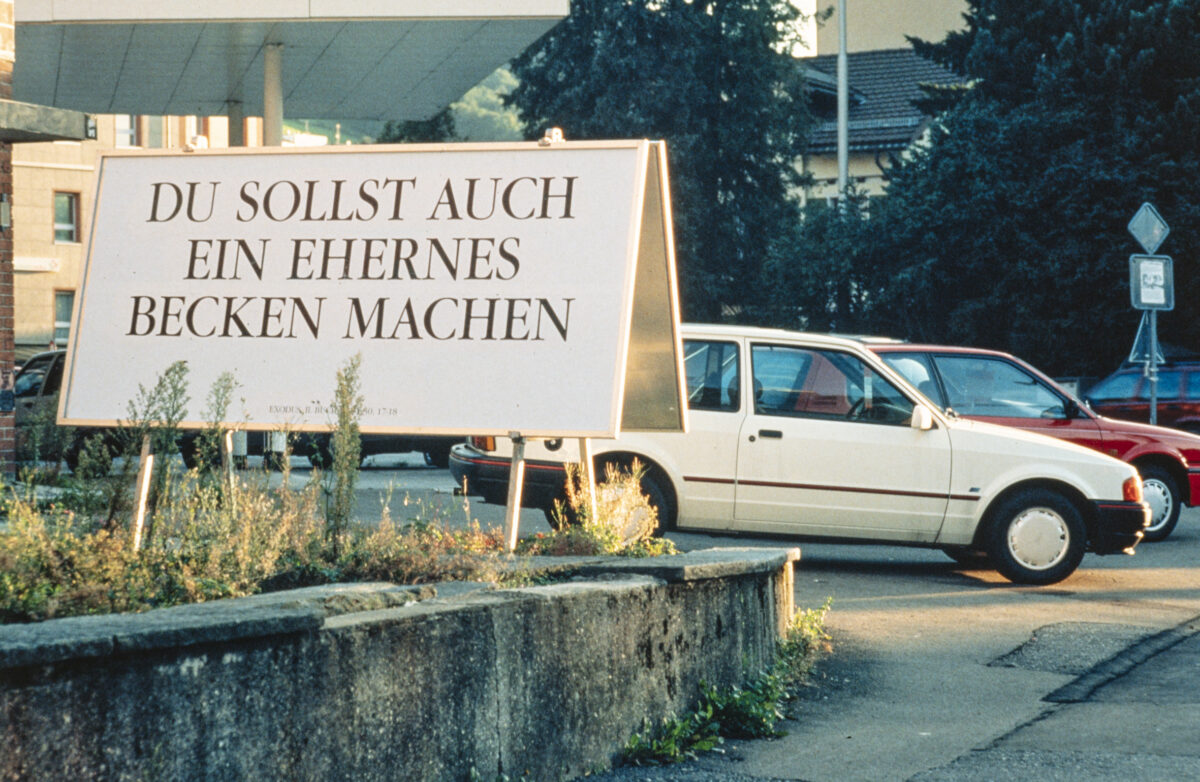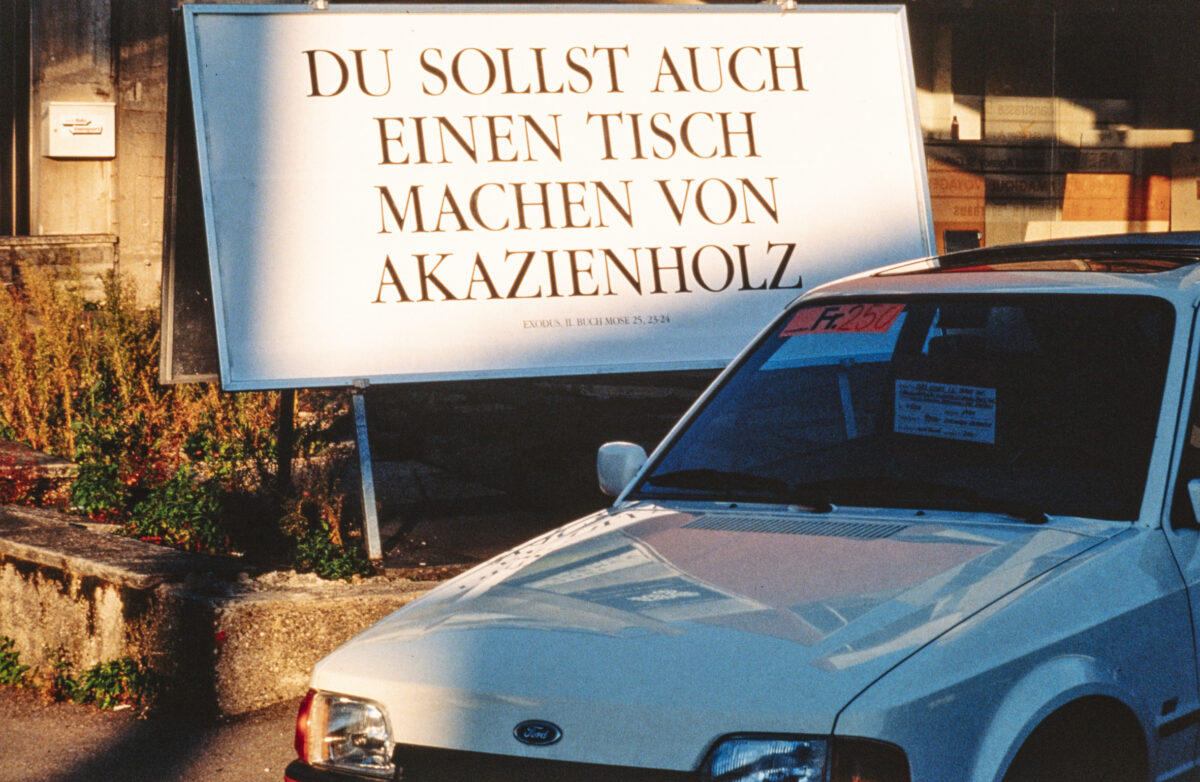Ten commandments
1991
In 1988, Buxbaum was admitted to the Academy of Fine Arts in Munich. During this time, he transitioned from painting and drawing towards conceptual art. He stopped painting—he began thinking about painting. His first catalog was titled Painting and documented objects and installations that explored the phenomenon of image-making and painting. Why does he paint? Why do people want to hang pictures in their homes? Why do they hunger for images? What is kitsch? Can we trust our eyes? What are optical illusions? How do blind people perceive the world?
This led to a second series of exhibitions and the catalog About Seeing – About Walking. He delved into iconoclasm, the political or religious urge to destroy images. In Golden Ratio, he examined the act of a mentally ill attacker who slashed Rembrandt’s The Night Watch with a kitchen knife at the Van Rijn Museum in Amsterdam.
The poster campaign Thou Shalt Not Make Any Graven Image explored the biblical prohibitions and commandments related to images in the Old Testament. His selection of ten commandments, which were artistically inspiring, was realized as large-format advertising posters in Brno and later with the Kunsthalle in St. Gallen. He was not interested in the usual moral commandments and prohibitions but rather in the craftsmanship instructions in the Book of Exodus, which provide precise directives for constructing the Ark of the Covenant – the Tabernacle: “You shall make a table of acacia wood. Two cubits shall be its length, a cubit its breadth, and a cubit and a half its height” (Book of Exodus 25:23). “You shall also make a basin of bronze, with its stand of bronze, for washing. You shall put it between the tent of meeting and the altar, and you shall put water in it” (Book of Exodus 30:18). These verses are part of the instructions given to Moses regarding the construction of the Tabernacle and its furnishings and the bronze basin (laver), which was used by the priests for ceremonial washing before performing their duties. Buxbaum’s path in art led him to the construction of such an ark. In his works, he aims to convey content that deals with existential questions and with God.
In 1988, Buxbaum was admitted to the Academy of Fine Arts in Munich. During this time, he transitioned from painting and drawing towards conceptual art. He stopped painting—he began thinking about painting. His first catalog was titled Painting and documented objects and installations that explored the phenomenon of image-making and painting. Why does he paint? Why do people want to hang pictures in their homes? Why do they hunger for images? What is kitsch? Can we trust our eyes? What are optical illusions? How do blind people perceive the world?
This led to a second series of exhibitions and the catalog About Seeing – About Walking. He delved into iconoclasm, the political or religious urge to destroy images. In Golden Ratio, he examined the act of a mentally ill attacker who slashed Rembrandt’s The Night Watch with a kitchen knife at the Van Rijn Museum in Amsterdam.
The poster campaign Thou Shalt Not Make Any Graven Image explored the biblical prohibitions and commandments related to images in the Old Testament. His selection of ten commandments, which were artistically inspiring, was realized as large-format advertising posters in Brno and later with the Kunsthalle in St. Gallen. He was not interested in the usual moral commandments and prohibitions but rather in the craftsmanship instructions in the Book of Exodus, which provide precise directives for constructing the Ark of the Covenant – the Tabernacle: “You shall make a table of acacia wood. Two cubits shall be its length, a cubit its breadth, and a cubit and a half its height” (Book of Exodus 25:23). “You shall also make a basin of bronze, with its stand of bronze, for washing. You shall put it between the tent of meeting and the altar, and you shall put water in it” (Book of Exodus 30:18). These verses are part of the instructions given to Moses regarding the construction of the Tabernacle and its furnishings and the bronze basin (laver), which was used by the priests for ceremonial washing before performing their duties. Buxbaum’s path in art led him to the construction of such an ark. In his works, he aims to convey content that deals with existential questions and with God.
